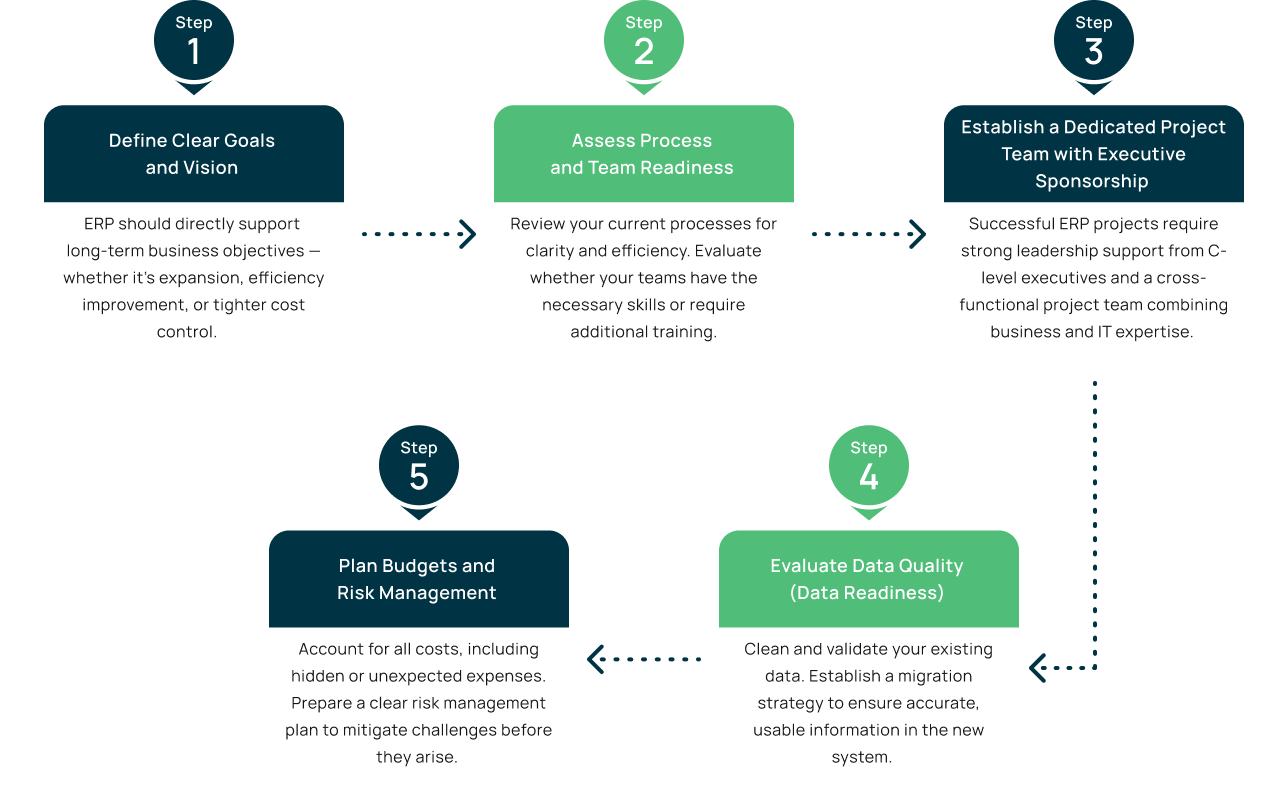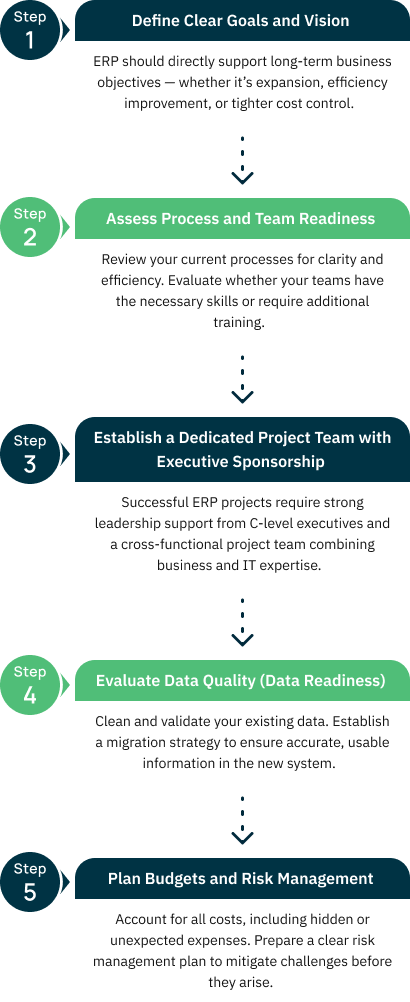
This guide shares 10 best practices that CEOs, CFOs, and CTOs should follow to ensure their ERP project delivers maximum business value.
Best Practice 1: Align ERP with Business Strategy
ERP should enable your business vision, not just automate processes. Make sure the system supports both current needs and long-term goals like expansion, digital transformation, or M&A readiness.
Best Practice 2: Understand the True Cost of Ownership
Best Practice 3: Plan for Scalability from Day One
Choose a platform that grows with you. Multi-subsidiary, multi-currency, and global functionality are key for businesses aiming to expand.
Best Practice 4: Prioritize Seamless Integration
An ERP should be the hub of your business, connecting CRM, HR, payroll, and industry apps. Integration prevents data silos and ensures a single source of truth.
Best Practice 5: Demand Real-Time Insights
Best Practice 6: Ensure Compliance and Security
Best Practice 7: Build for Flexibility and Change
Best Practice 8: Choose the Right Partner for Support
Best Practice 9: Assess Vendor Roadmap and Innovation
Best Practice 10: Learn from Industry Success Stories
Preparing for ERP: Readiness Before You Begin


Pitfalls to Avoid
- Choosing ERP based on trends, not strategy – Selecting a system just because it’s popular, rather than ensuring alignment with your business goals.
- Underestimating the total cost of ownership (TCO) – Focusing only on license fees while overlooking implementation, training, support, and upgrade costs.
- Neglecting change management – Failing to prepare employees and stakeholders for new processes, which often leads to resistance and poor adoption.
- Over-customization – Relying too heavily on customizations that make the system complex, costly, and difficult to upgrade in the future.
- Selecting an unreliable vendor or partner – Choosing a provider without proven expertise or industry knowledge can result in delays, instability, and even project failure.
Conclusion
ERP implementation is a journey, not a one-time project. By following these best practices, you can reduce risks, accelerate ROI, and ensure your ERP system becomes a powerful growth engine for your business.
📞 Ready to take the next step?

Jessica has a Bachelor of Arts degree from Trent University and a Masters degree from Cambridge University. He is an Adjunct Professor of Finance at Simon Fraser University’s Beedie School of Business and is both a Canadian Chartered Professional Accountant and a UK Chartered Accountant.

Jessica has a Bachelor of Arts degree from Trent University and a Masters degree from Cambridge University. He is an Adjunct Professor of Finance at Simon Fraser University’s Beedie School of Business and is both a Canadian Chartered Professional Accountant and a UK Chartered Accountant.

